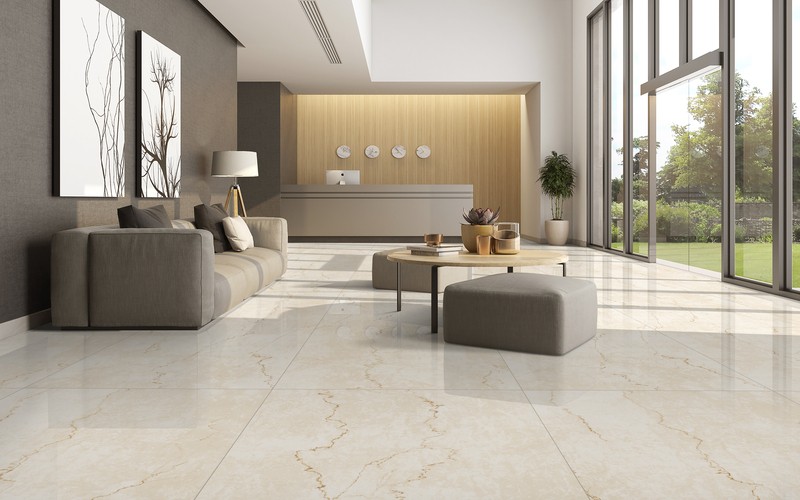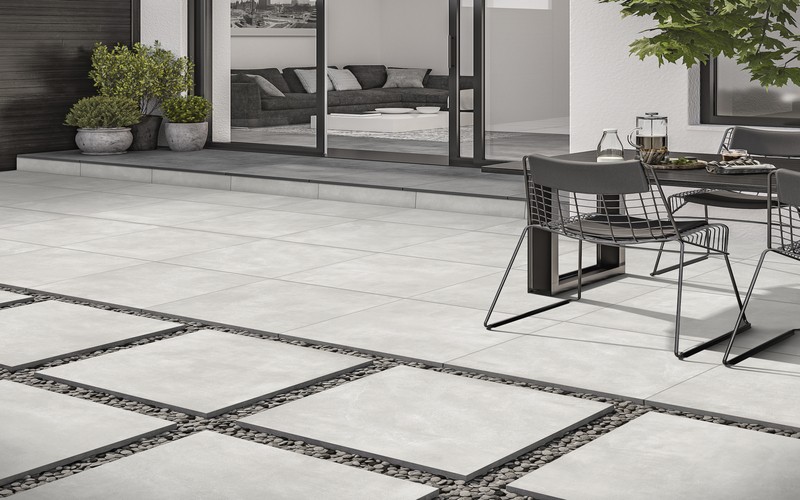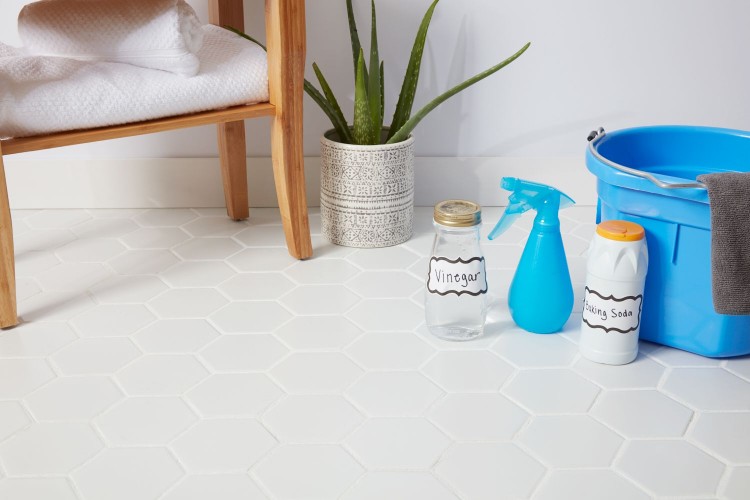What are the components of floor tiles?
- News
- 23 Sep 2023

When it comes to interior design and construction, flooring plays a pivotal role in setting the tone and ambiance of a space. One of the most versatile and widely used flooring materials is the humble floor tile. Floor tiles come in a myriad of styles, sizes, and materials, but have you ever wondered what lies beneath their smooth or textured surfaces? In this article, we'll take a deep dive into the components of floor tiles, shedding light on the materials that make up these essential building blocks of modern interiors.
The Foundation: The Tile Body
At the heart of every floor tile lies its body, also known as the core or biscuit. This component provides the tile with structural integrity and durability. The material used for the tile body varies depending on the type of tile, and there are three primary categories:
Ceramic Tiles
Ceramic tiles are a popular choice for both residential and commercial spaces. They are primarily composed of clay, minerals, and water. The manufacturing process involves shaping the mixture into the desired tile form and subjecting it to high-temperature firing in a kiln. This firing process transforms the clay into a hard and sturdy material. Ceramic tiles are known for their affordability, versatility, and wide range of design options, making them suitable for various applications, including walls and floors.
Porcelain Tiles
Porcelain tiles are a subset of ceramic tiles, known for their exceptional durability and resistance to water. These tiles are crafted from a finer clay mixture, which is fired at extremely high temperatures. The resulting material is denser and less porous than standard ceramic, making porcelain tiles highly resistant to water absorption. Due to their robustness, they are often preferred for high-traffic areas, such as commercial spaces and outdoor installations.
Natural Stone Tiles
For a touch of timeless elegance, natural stone tiles are the go-to choice. These tiles are sourced from quarried stone blocks, each possessing its own unique color, pattern, and texture. Common natural stone options include marble, granite, slate, travertine, and limestone. The inherent beauty of natural stone lies in its authenticity and the sense of luxury it brings to a space. However, these tiles require proper care and maintenance to preserve their appearance and longevity.
The Outer Shell: The Glaze
The glaze is the outermost layer of a tile and serves multiple functions, both practical and aesthetic. It's applied to the tile's surface and contributes significantly to its appearance and performance. Here's a closer look at the role of the glaze:
Aesthetic Enhancement
The glaze is where creativity and design come into play. It determines the tile's color, texture, and overall visual appeal. Tiles can be glazed in a wide spectrum of colors and patterns, allowing for endless design possibilities. In recent years, digital printing technology has revolutionized tile design, enabling the creation of highly detailed patterns that convincingly mimic natural materials like wood grains or marble veining.
Protection and Durability
Beyond aesthetics, the glaze serves as a protective shield for the tile. It enhances the tile's resistance to stains, scratches, and moisture. This protective layer is particularly valuable in areas prone to spills or high wear and tear. The glaze effectively seals the porous surface of the tile body, making it easier to clean and maintain.
Gloss Levels
Glazes can exhibit varying levels of gloss, ranging from high-gloss to matte finishes. The choice of gloss level can significantly impact the ambiance of a space. High-gloss tiles tend to reflect light more, creating a bright and airy atmosphere, while matte tiles offer a softer, more subdued appearance.
Design and Color: The Creative Palette
The design and color of floor tiles play a pivotal role in shaping the character of a room. They allow homeowners and designers to express their creativity and set the desired mood. Let's explore the nuances of tile design and color:
Versatile Design Options
Floor tiles come in an extensive range of designs, catering to different interior styles and preferences. Whether you're aiming for a minimalist, rustic, or contemporary look, there's a tile design to match. Manufacturers continuously innovate to produce tiles that can emulate various materials, from natural stone and wood to intricate mosaic patterns.
Customization
The design and color of floor tiles can be tailored to suit specific project requirements. Customization options are available, allowing designers and homeowners to create unique and personalized spaces. This flexibility extends to the selection of grout color, which can either blend seamlessly with the tiles or provide a contrasting design element.
Aesthetic Impact
The choice of tile design and color can dramatically impact the overall aesthetics of a room. Light-colored tiles can make a space feel more open and spacious, while darker tiles can create a cozy and intimate atmosphere. Patterned tiles can add visual interest and serve as a focal point in a room's design.
The Bonding Agent: Adhesive
Installing floor tiles is a meticulous process that requires the use of adhesive or mortar to secure the tiles to the subfloor. The type of adhesive chosen depends on the tile material and the substrate it's being installed on. Here's why the adhesive is a crucial component:
Ensuring Secure Attachment
Proper application of adhesive ensures that tiles are securely attached to the subfloor. This prevents shifting or lifting of tiles over time, which can lead to uneven surfaces and potential hazards.
Compatibility
Different types of tiles may require specific adhesives. For instance, porcelain tiles often require a thin-set mortar, while natural stone tiles may benefit from a specific adhesive formulated to accommodate their weight and characteristics.
The In-Between: Grout
Grout is the often-overlooked component that plays a vital role in tile installations. It fills the gaps, or joints, between tiles and serves both practical and aesthetic purposes:
Joint Filling
Grout fills the spaces between tiles, ensuring they are evenly spaced and held firmly in place. This prevents moisture from infiltrating beneath the tiles and helps maintain their structural integrity.
Color and Design
Grout isn't just functional; it's also an integral part of the overall tile design. It comes in various formulations, including sanded and unsanded, and can be color-matched to the tiles or chosen to provide contrast. The selection of grout color can influence the overall appearance of the tiled surface. Contrasting grout can highlight the individual tiles and create a striking pattern.
Maintenance and Cleanliness
The type of grout used can impact the ease of cleaning and maintenance. Some grouts are designed to be more stain-resistant, making them a practical choice for high-traffic areas or spaces prone to spills.
Additional Considerations: Backer Board and Underlayment
In certain tile installations, especially those involving ceramic or porcelain tiles, a backer board or underlayment may be used between the subfloor and the tiles. These materials provide additional stability and help prevent issues like cracking or shifting. Here's a closer look:
Cement Backer Board
Cement backer board is a commonly used underlayment material for tile installations. It is moisture-resistant and provides a stable surface for tile adherence. Cement backer board is especially valuable in wet areas like bathrooms and kitchens.
Plywood and Other Underlayment Materials
Depending on the project's requirements, other underlayment materials, such as plywood or specialized tile underlayment boards, may be
- floor tiles
- tile components
- tile body
- glaze
- design
- adhesive
- grout
- flooring materials
- interior design
- construction














